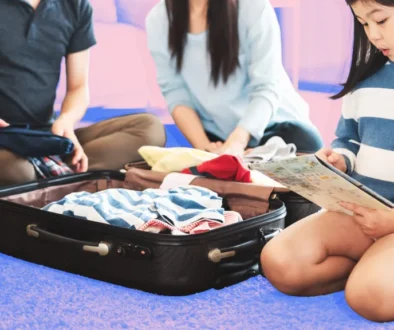Importance of Child-Directed, Mixed Age Group Play
I recently read a book called Free to Learn, by developmental psychologist Peter Gray, which argues that—our children, if free to pursue their own interests through play, will not only learn all they need to know, but will do so with energy and passion. As a camp director who has seen children thrive in our girls-camp and boys-camp programs, I agree. [Below is a blend of paraphrases, direct quotations, and personal thoughts regarding portions of the book that stood out to me…there are as many cites as I can recall…]
Children should be in charge of their own education, with play and self-direction predominating how they learn. Not to put too fine a point on it, but their future depends on it.
Here are a few reasons why:
- Play is a state of mind that promotes imagination;
- Geniuses often seem to be retain into adulthood the imaginative capacities of small children;
- Through play, young humans practice the skills they must develop to survive and thrive; and
- Thriving in uncertain times means having precisely those qualities people develop through self-directed experiences.
Certain Parenting Styles Detract from our Children’s Development
As parents, our job is to facilitate an atmosphere whereby children can thrive by being in charge of their own learning experiences. Certain parenting styles detract from our children’s development.
There is the directive-domineering style of parenting—the goal of which is to turn the child into a servant. Picture here the “do what I say, not what I do” style, or “do this because I say so” type. Most parents like to think they don’t fall into this style. (I know that I do occasionally, in my weaker moments…)
There is the directive-protective style of parenting, which is the style of parenting aiming to watch over and control a child’s experiences; most will recognize this style as well-intentioned, although this may cause even more harm than the directive-domineering style.
“Directive-protective parents do not limit children’s freedom in order to make them servile, as directive-domineering parents do/did. Rather, they limit freedom because they fear for their children’s safety and futures and believe they can make better decisions for them than the children can for themselves. With all good intentions, directive-protective parents deprive their children of freedom at least as much as did the directive-domineering parents of the past. Directive-protective parents … use all of the other powers they have as providers to control their children’s lives. While trustful parents view children as resilient and competent, directive-protective parents view them as fragile and incompetent. While trustful parents believe that children develop best when allowed to play and explore on their own, directive-protective parents believe that children develop best when they follow a path carefully laid out for them by adults.” (Peter Gray, Free to Learn, p. 212)
The fear-based information parents receive does not reflect statistical reality, and it feeds into every parent’s worst nightmares. For the directive-protective parent, fear of well, everything, becomes so great that they don’t allow children to play and explore and take risks on their own, thus preventing them from learning how to take care of themselves. That may be the greatest danger of all. (Peter Gray, Free to Learn, p. 212)
When parents act based on fear of hurting their child’s psyche, most children recognize such continuous praise and support as false and shrug it off as one more annoyance they have to deal with from their parents. A few don’t, however, and those are the ones we need to worry about.(Peter Gray, Free to Learn, p. 212)
How We Can Better Foster our Children’s Development
There are things that we can do to stem the tide and to empower our children via self-directed opportunities. We can try to have as much of their lives reflect the following:
- self-chosen and self-directed activities;
- have the means of their activities be more valued than the ends;
- have their activities have structure or rules that are not dictated by physical necessity but emanate from the minds of the players;
- allow them as much as possible to engage in play that is imaginative, nonliteral, and mentally removed in some way from ‘real’ or ‘serious’ life; and have them in an active, alert, but non-stressed frame of mind.
Trustful Parenting Can Empower our Children
We can use parenting styles that contibute strongly to our children’s positive development.
By engaging in trustful parenting, we allow self-educative instincts to blossom. Trustful parenting sends messages to children consistent with the real needs of children today: You are competent. …You know your own abilities and limitations. …Your needs are valued. Your opinions count. You are responsible for your own mistakes and can be trusted to learn from them. …We are with you not against you.” (Peter Gray, Free to Learn, p. 210)
Mixed Ages Are Important
We can also encourage and facilitate our children’s engagement with a broad-based age group of children. This is important for a number of reasons:
- Children learn best from those with whom they have caring, trusting relationships.
- The continuous presence of older children, who know the younger ones well and care for them helps to ensure that young children feel safe and secure.
- Older children learn valuable lessons by interacting with younger children including learning to nurture and lead; learning through teaching; and via the creativity-enhancing effects of younger children.
How To Become a More Trustful Parent
The most important thing that we can do for our kids is to dedicate ourselves to becoming more trustful parents. Try these tips:
- Examine Your Own Values,
- Let Go of the Idea That You Determine Your Child’s Future,
- Resist the Temptation to Monitor Your Child’s Activities, and
- Find or Create Safe Places and Opportunities for Children to Play and Explore.
Instead of Analyzing our Kids’ Test Scores, Here’s the Only Test that We Should Consider, when Pondering Childhood Development
“Think back to your own childhood and recall your happiest moment. Where were you? What were you doing? Who, if anyone, was with you? More specifically, was an adult with you at that moment?…For 90 percent [of people], no adult was present…That…suggests that our happiest moments are usually those that are fully our own, the result of our own doing, not something presented to us by powerful others.” (Peter Gray, Free to Learn, p. 220)





